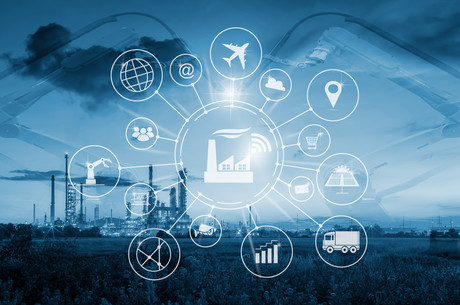Smart Industry: four principles powering this industrial revolution

‘Smart Industry’ isn’t a random label one can just throw around, but the current industrial revolution brought on by a sophisticated and precise set of technologies that are changing man’s relation to manufacturing.
Vipin Bothra will hold a session on the building blocks of the Smart Industry during the ST Developers Conference, set to take place on 6 September in Santa Clara, California, to guide engineers to a better comprehension of what’s actually happening behind the looking glass.
Living the Smart Industry revolution today
Industry 4.0, which we will use interchangeably with Smart Industry, was coined in early 2010 as the German government tried to make factories smarter by bringing connected technologies and manufacturing together. Hence, the Working Group on Industry 4.0, which offers recommendations to German leaders on how to bring on this new industrial age, has formalised the framework of this new step in the evolution of manufacturing.
The name Industry 4.0 shows it’s the Fourth Industrial Revolution. The first one took place between 1760 and 1840 with the advent of mechanisation, as well as the use of chemical manufacturing, water power and steam. Then came batch production between 1870 and 1914, which was the Second Industrial Revolution. During that time, assembly lines and the use of electricity completely changed how plants operated. Finally, the third revolution took place during the 20th century, when computing systems and automation replaced manpower.
In their paper ‘Design Principles for Industrie 4.0 Scenarios’, German scholars Hermann, Pentek and Otto define the four pillars of the smart industry: technical assistance, information transparency, interconnection and decentralised decisions. According to Bothra, market development director at ST, his company is the only one in the world to offer leading solutions for all four of these principles. That means it can bring comprehensive innovations that work together in the most optimised and efficient way possible to realise the potential of this new revolution.
Here’s a quick overview of these four foundational concepts:
Technical assistance means workers are no longer just operators but use machines to make critical decisions. For instance, mobile devices carry information that shape judgment calls and new systems make all tasks safer. Information visualisation is a significant component of this principle, and ST offers multiple development tools to help engineers build the apps they need to make technical assistance a reality.
Information transparency is the ability to bring all the elements of a smart plant together to substantially increase efficiency, thanks to the use of new models. It’s basically where the virtual and the physical world meet. The consequence of this increase in efficiency is an augmentation in productivity and a decrease in energy costs. On top of enabling information transparency, ST makes it possible to compound those energy savings through low-power solutions, such as better motor-control systems or SiC components, among others.
Interconnection is what most people mean when they talk about IIoT (Industrial Internet of Things) or Smart Industry. However, as we’ve seen, Industry 4.0 is so much more than that. This principle signifies that all the sensors, devices, machines and people are able to interact with one another by using secure and ubiquitous communication protocols that facilitate the exchange of information. ST has a crucial role in this domain because it offers fantastic software libraries to take advantage of powerful transceivers, and it is a major partner in most of the consortiums that define those protocols’ specifications.
Decentralised decisions are the eye-catching aspects of this revolution because this principle moves the intelligence of the plant out of a centralised system to peripheral nodes. Thanks to low-power microcontrollers (MCU) offering new levels of horsepower, like the STM32 and STM8, more devices can make critical decisions, monitor activities and function autonomously. This increases efficiency and ensures the consequences of a failure are not as problematic since the rest of the plant is less affected, if at all.
Peeking at Industry 5.0
As Bothra explains, the most misunderstood and difficult principle to implement is interconnection. Because there are so many standards and constraints, most companies still prefer interconnection through wires, which can be challenging to deploy on a massive scale. Moving to wireless protocols is very complex because each plant must perform a lot of tests and trials to ensure there is no interference, as well as guaranteeing that all systems are reliable and secure.
He also explained that the decentralised decision pillar is probably gaining the most traction at the moment. ST’s MCUs have become popular in the Smart Industry world as people come to grasp the new abilities and efficiencies that those components offer. In fact, Bothra anticipates that the next industrial revolution (Industry 5.0) will be the machine-learning capabilities that are coming to those systems.
To better understand the principles that shape this new age of manufacturing, you are invited to attend Bothra’s presentation ‘Building Blocks for Smart Industry’. Register for the ST Developers Conference now, before tickets run out.
Originally published here.
Australia's largest electronics expo returns to Sydney
Electronex, the annual electronics design and assembly expo, will return to Sydney on 19–20...
The fundamentals of Australian RCM compliance
The following information aims to help readers understand the Australian compliance requirements...
Largest ever Electronex Expo in Melbourne
The Electronics Design and Assembly Expo will return to Melbourne from 10–11 May at the...






